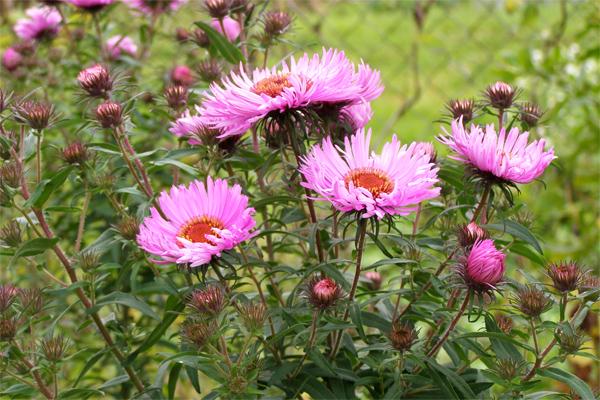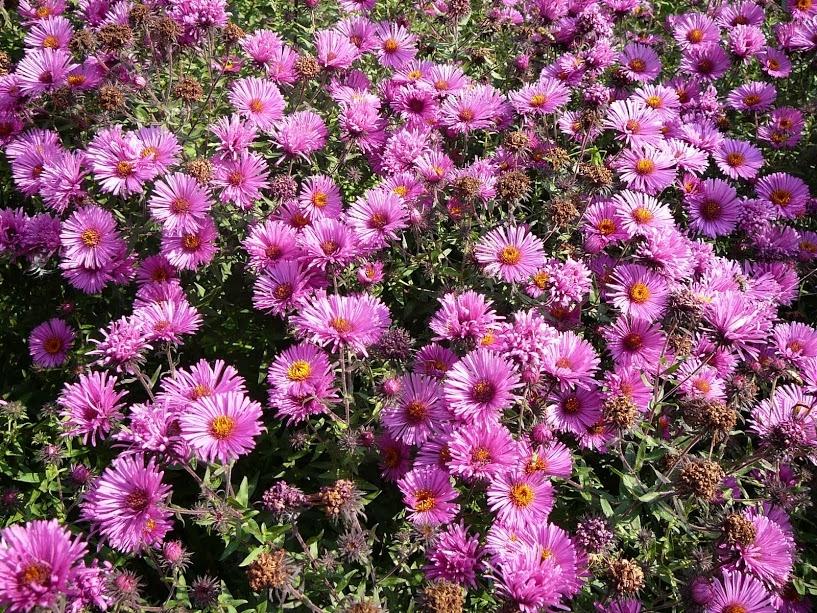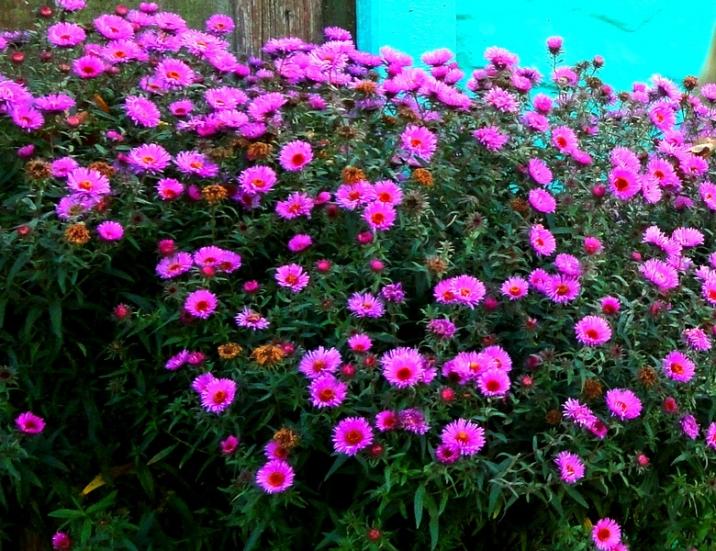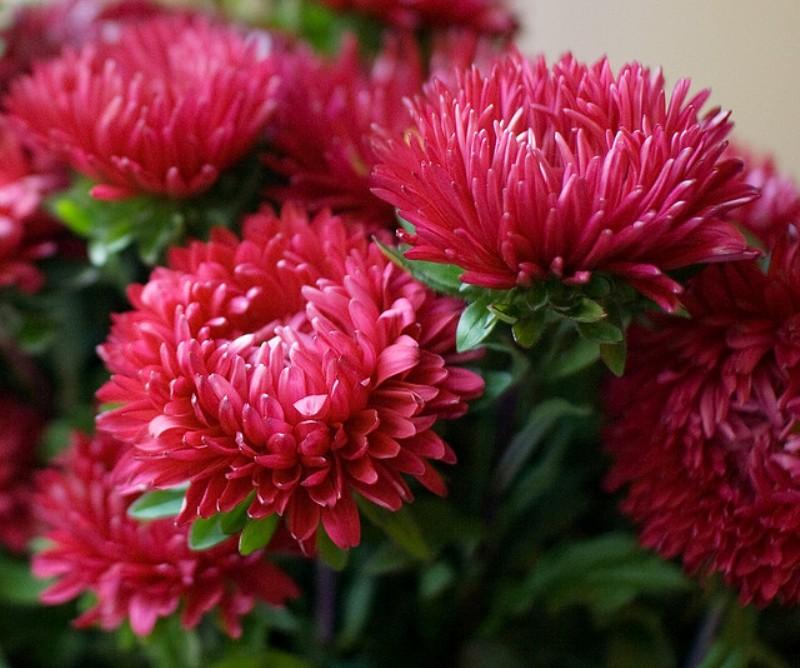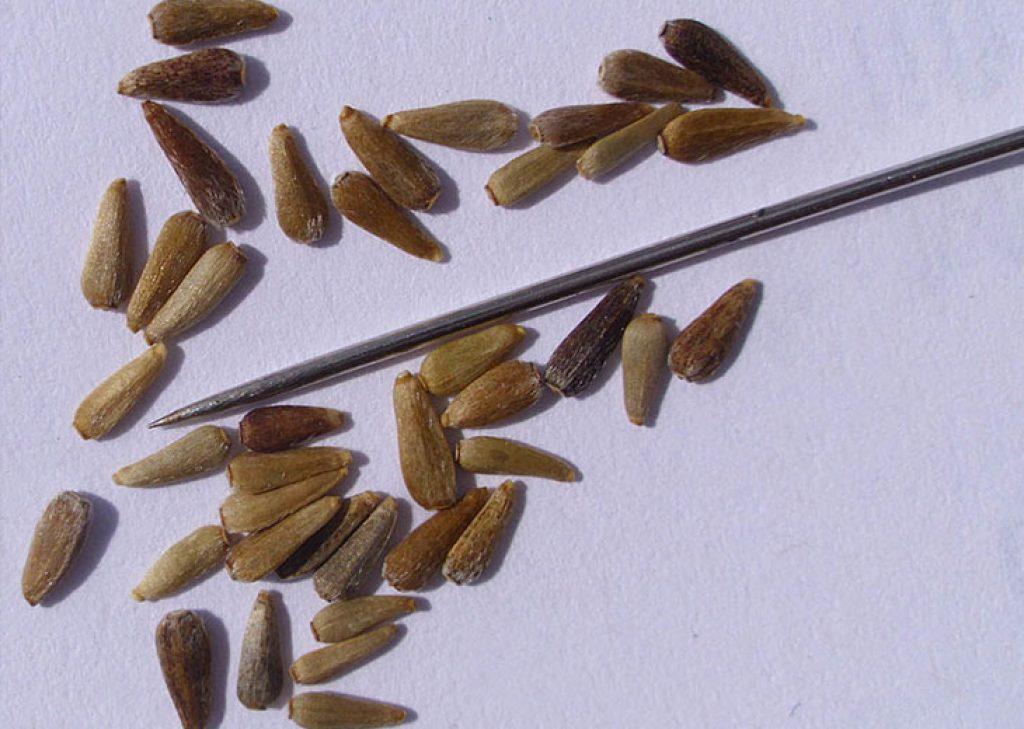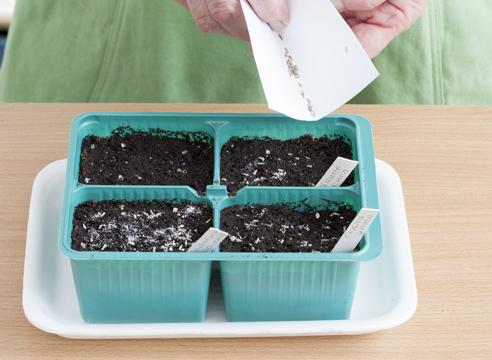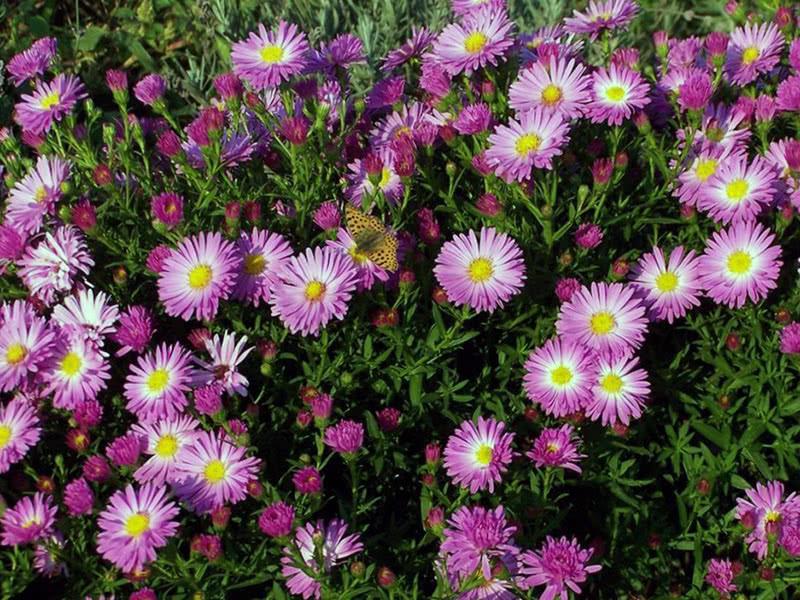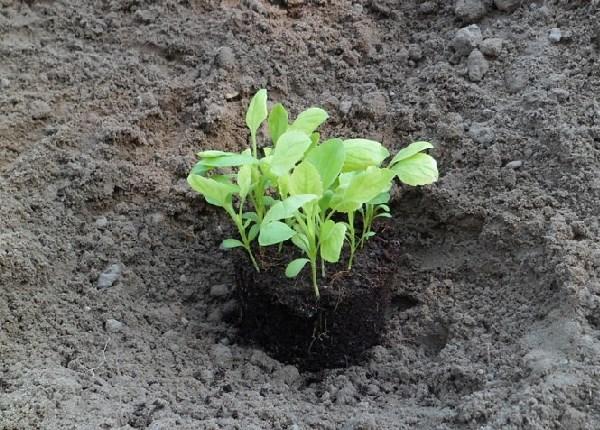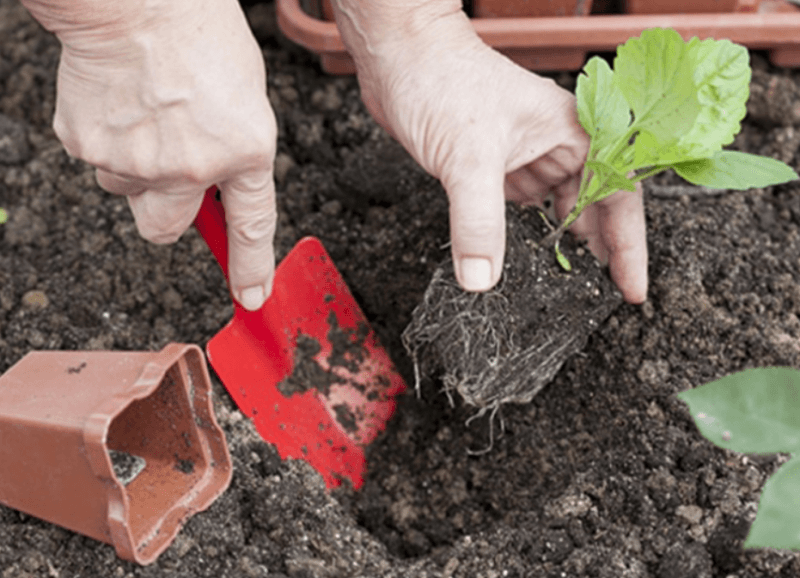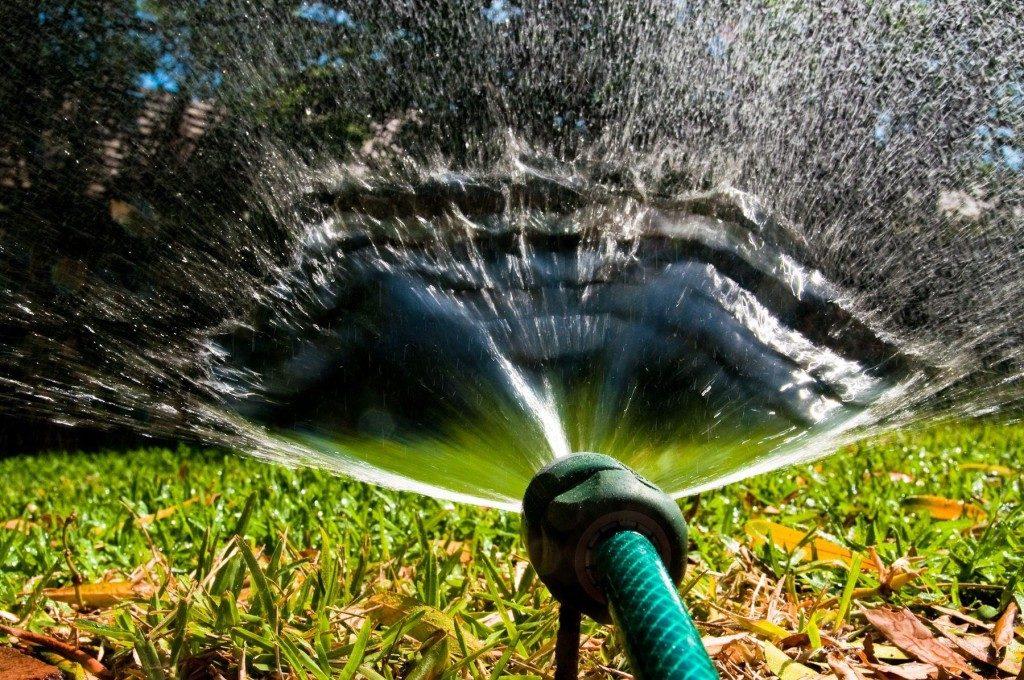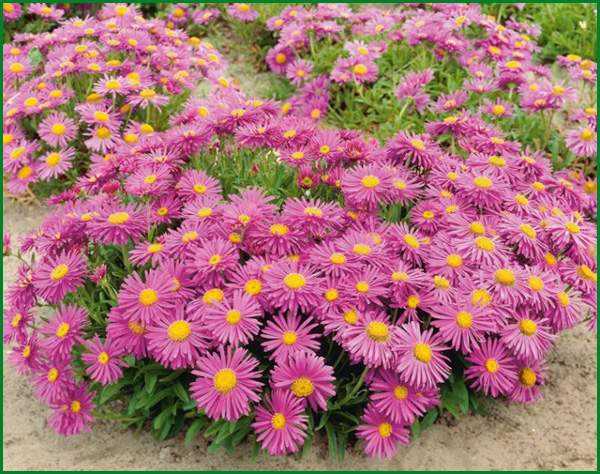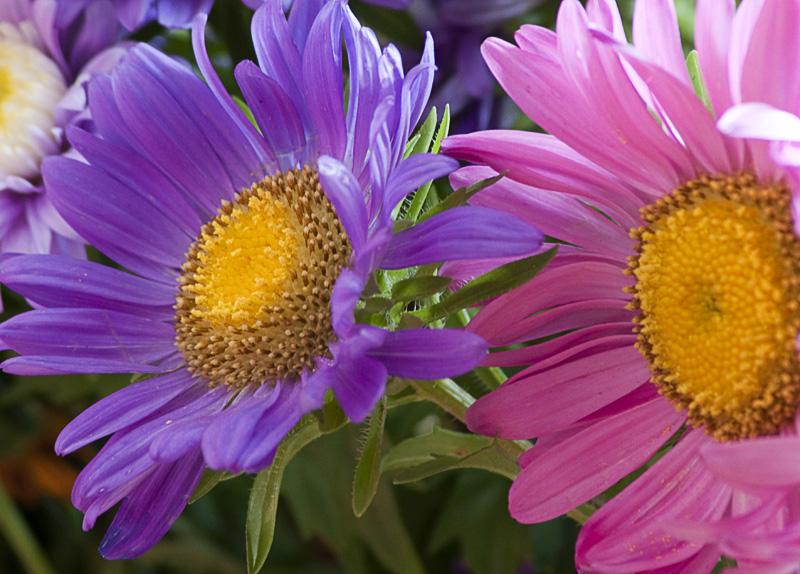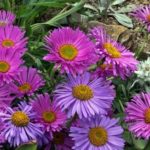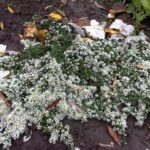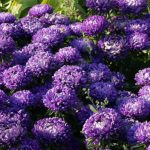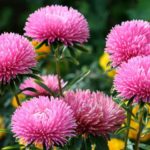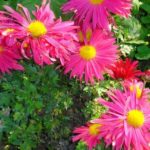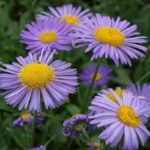Deep autumn pleases with different colors. But these are the colors of the leaves that change color due to the cold. The New England American Aster brings a slice of summer to the chilly weather. Depending on the variety, you can see the rainbow colors of the huge bushes. Each plant has many bright inflorescences that cannot but please the eye and lift your spirits.
- Description and characteristics of New England (American) perennial asters
- Varieties of varieties
- Bars Pink
- Braumeen
- Rothe Stern
- Constance
- Dr. Ekener
- Reproduction of Novobelgian
- Seed propagation
- Seedling method
- Dividing the bush
- Cuttings
- Features of cultivation
- Optimal time
- Preparation of seedlings
- Selecting a location
- Landing method
- How to care for flowers?
- Watering and humidity
- The soil
- Top dressing
- Temperature
- Winter care
- Treatment against pests and diseases
- Possible problems
Description and characteristics of New England (American) perennial asters
The eastern regions of North America are considered the homeland of the New England or New Belgian aster. It grows as a bush, the shape is back pyramidal. Among the numerous varieties, the bushes are mainly medium, tall, gigantic - 0.5-2 meters. The bush spreads up to 80 centimeters in girth.
Grown as a bush perennial. It differs from other species in the number of flower stalks - up to 200 pieces on one bush.
Spreading root system asters allows the plant to be propagated by bushes method. Astra is recovering quickly.
The rainbow range of colors allows you to decorate borders, flower beds, and arrange compositions with them. The New England aster looks great with low-growing plants. Flowers are 2-4 centimeters in diameter. The petals are reed-like, sometimes in several rows, sitting in a ring above the tubular ones. The tight fit to each other creates the impression of terry. Stems are bare or hairy. Branched at the top. The leaves are lanceolate, sessile, green in color.
Varieties of varieties
The New England aster comes in many varieties.
Bars Pink
The giant bush (1.5 meters) of the Bars Pink aster has many inflorescences. The diameter of the flower is 3-4 centimeters. In the center there are tubular petals of yellow and red shades. There are reed, simple petals of pink and lilac color sitting around. The plant looks beautiful in groups and alone. When cut, one stem replaces the bouquet.
Braumeen
Perennial aster Braumeen with a spreading root system. Propagated vegetatively and by seeds. Stretches up to 120-130 centimeters. The tubular petals inside are yellow, dirty orange.Reed petals are mostly lilac. Decorates flower beds and flower beds. When cut, it lasts up to 2 weeks without losing its smell or appearance.
Rothe Stern
The powerful bush of the Rothe Stern aster can stretch up to 150 centimeters. A giant bush with numerous inflorescences will decorate any front garden or flower bed. Aster flowers resemble chamomile. Inside the inflorescences are tubular, the petals are brown in color. The outer ring of reed petals is wine-red. They delight with flowering in the autumn - up to 30 days. If you remove dried inflorescences, the duration of flowering can be increased.
Constance
An equally beautiful variety of aster Constance. His height is 180 centimeters, and he looks advantageous among low-growing plants and green grass. There are 200 flower stalks on the bush with miniature buds 3 centimeters. The center is framed by tubular petals of yellow or brown color. The outer circle of the inflorescence is purple in color. Astra Constance survives well in northern regions, as it can withstand sub-zero temperatures of up to 7 degrees.
Dr. Ekener
Tall varieties include the Doctor Ekener aster. Propagated by cuttings, dividing the bush, and seeds. Small inflorescences – up to 4 centimeters in diameter, collected in racemes. Tubular petals are yellow, brown. Reed flowers of a red-violet hue. The aster is pleased with its flowering in October, when other plants fade.
When cut, the Doctor Ekener variety remains in its original form for up to 15 days, provided that the water is changed daily. You can extend the period with a silver coin, a spoonful of sugar or aspirin. It is not recommended to plant small perennials next to asters; they will kill them.
Reproduction of Novobelgian
Astra Novobelgian grown by various methods. Vegetatively: cuttings, dividing the bush. By seeds: seedlings and non-seedlings.
Seed propagation
One of the methods of seed propagation is the seedless method. This method involves sowing seeds in open ground. Seeds are planted in 3 stages. In the fall, furrows are prepared and seeds are sown. The beds are watered abundantly and covered with humus. In winter, the grooves are prepared in advance. In winter, seeds are laid, covered with soil and a shelter is made from organic materials. In the spring, after frosts, the shelter is removed.
In spring, the seeds are germinated or soaked before planting. Freshly harvested planting material does not need these procedures.
Sow the seeds in the furrows, covering them with a 5 mm layer of soil. Provide abundant watering. Cover the planting with film. When 3-4 true leaves appear, the seedlings dive. The distance between seedlings is left 15 centimeters.
As soon as the seedling reaches 10 centimeters, it is transplanted to a permanent place. During planting, the distance between the bushes is taken into account, based on the characteristics.
Seedling method
Seeds for growing seedlings are germinated or soaked before sowing. There is no need to scarify, since the seeds do not have a dense capsule. For disinfection purposes, the soil is spilled with a hot solution of potassium permanganate or freezing or steaming is used.
The containers can be boxes or individual peat pots. The latter option causes less damage to the root system, and the flowers take root faster. The soil is watered until moist.
- The seeds are planted to a depth of 1 centimeter and sprinkled with sand.
- Cover the container. The room temperature is maintained at 22 degrees.
- When seedlings appear, the cover is removed.
- Reduce the temperature to 15-16 degrees.
- When 3 leaves appear, the seedlings dive into separate containers.
Dividing the bush
Gardeners often use a simple method - dividing the bush.At the age of 3 years, the plant is dug up and divided into sections. In each part, three new shoots with a root system are left. The procedure involves several functions:
- renews the bush;
- new bushes will appear;
- necessary when changing the landing site.
There is a second option. The bush is left in place. Cut off a part with a sharp shovel. Then they are divided into divisions and planted in a permanent place. The distance is maintained at 50x80 or 20x30 centimeters.
Cuttings
Cut cuttings from the crown to 15 centimeters. A twig with several buds is sent to a greenhouse to form a root system.
Features of cultivation
The New England aster is unpretentious, and during the growing process it is only important to fulfill the main requirements: choose the right planting time and place.
Optimal time
Seeds are planted in open ground in three stages:
- Deep autumn – second ten days of November.
- Winter - sowing is possible from December to February.
- Spring – April-May, after frosts, when the earth is warmed up.
Seedlings are grown for 65 days before planting in open ground. Somewhere in March, aster is sown at home. Dividing the bush is carried out at any time: in spring, summer, autumn, before or after flowering.
Preparation of seedlings
Seedlings are hardened off before planting in open ground. Lower the temperature to 10 degrees. The procedure is carried out within 10 days.
Selecting a location
The New Belgian aster loves sunny areas. Shaded places promote elongation of shoots and reduce the number of inflorescences. The plant does not tolerate cold winds. Aster does not tolerate stagnant water. Before planting, the depth of groundwater should be determined.
Landing method
Medium-sized varieties of New England asters are planted according to the pattern 30x50, giant ones - 80x60 centimeters.
How to care for flowers?
Simple actions are required during flower growth: watering, fertilizing, controlling diseases and pests.
Watering and humidity
In hot summers, New England aster is watered generously. The procedure is carried out after sunset. Pour 3 buckets of water under each bush. At the time of budding, watering is also required.
The frequency of watering depends on air humidity. The higher the humidity, the less frequent the watering. After watering, the soil is loosened. Just keep in mind that the roots are located close to the surface, so you can’t go deeper than 5 centimeters.
The soil
Aster requires nutritious soil with a neutral reaction. If the soil is acidic, add dolomite flour or lime.
Top dressing
New England aster responds well to feeding.
- First feeding. Apply mineral fertilizer when 4 leaves appear.
- Second feeding. At the time of budding, complex fertilizers are applied.
- Third feeding. During active flowering, potassium-phosphorus fertilizer is applied.
Temperature
New England aster tolerates drought well. You will not see the plant drooping. Only the lower leaves will turn yellow. It can also withstand autumn frosts up to 8 degrees.
Winter care
Winter hardiness is the main characteristic of New Belgian asters. But even they will not tolerate frosts above 40 degrees. In harsh climatic conditions, bushes are insulated for the winter. To do this, the stems are trimmed to create stumps. Leaves and humus are placed on top.
Treatment against pests and diseases
In the fight against fusarium, a solution with potassium permanganate is used. The seeds are soaked for 3 minutes and washed under water.If a bush is affected, all affected areas are removed and burned. Healthy asters are sprayed with Fundazol.
Powdery mildew and gray rot affect perennials in the summer. Reasons: rainy weather, overflow. The bushes are treated with Topaz. The New Belgian aster is attacked by spider mites and aphids. The bushes are sprayed with a preparation that is harmless to bees, but lethal to pests - Actofit.
Possible problems
Growers face several problems when growing New England aster.
- Seeds do not germinate or appear in small quantities. It is necessary to use freshly harvested planting material. Every year germination rate decreases by 50%. Please pay attention to the collection period when purchasing.
- Aster is susceptible to fusarium. Preventive treatment of seeds in a solution of potassium permanganate and compliance with agrotechnical requirements will help prevent the disease: change the planting site after 3-5 years, do not plant dense bushes. You should monitor the soil moisture under the bush.
- Sparse flowering. Perhaps due to planting the bush in the shade. Due to lack of sun, the inflorescences thin out, and then the bush will not bloom at all.
- A rust disease has appeared. This means they covered the aster with spruce branches. Conifers infect aster.

